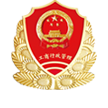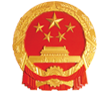 400 867 2009
400 867 2009臺灣海峽導彈危機是指1995年至1996年間,中國政府為震懾"臺獨"勢力、反擊美國的外交挑釁而進行的系列軍事演習行動。
1995年6月7日至11日,"臺獨"分子李登輝訪美,美國政府打破了將近17年不準臺灣最高層領導人訪美的"禁令",嚴重損害了中美關系的政治基礎。同時還為臺灣當局推行"兩個中國"、"一中一臺"政策打氣撐腰,助長了臺灣當局和國際反華勢力的囂張氣焰。為維護地區和平、震懾臺獨分子、反擊美國的外交挑釁,1995年7月和1996年3月,中國進行了兩次大規模導彈實彈發射演習,臺海局勢驟然緊張,因此被稱為"臺灣海峽導彈危機"。
"臺灣海峽導彈危機"有力地震懾了"臺獨"勢力,充分表明了中國政府維護國家統一的堅定意志和決心,也使得克林頓政府清楚地認識到臺灣問題的敏感性以及中美關系的重要性。
The Taiwan Strait Missile Crisis
The Taiwan Strait missile crisis was triggered by a series of military exercises conducted by the Chinese government in 1995 and 1996 to deter a visible display of separatist ambitions on Taiwan and to counter U.S. diplomatic provocation.
Lee Teng-hui, a proponent of Taiwan independence, visited the United States from June 7 to 11, 1995, after the U.S. government revoked a 17-year ban on visits by high-level Taiwanese officials to the United States in a policy reversal that seriously undermined the political basis for Sino-US relations. The U.S. government also gave its backing to the Taiwanese authorities in promoting the "two Chinas" or "one China, one Taiwan" policy, encouraging the Taiwanese authorities and international anti-China forces to launch further and more egregious initiatives. In order to maintain regional peace, deter further moves by Taiwanese separatists, and respond to U.S. diplomatic provocation, China conducted two large-scale live-firing missile exercises in July 1995 and March 1996. The rapid escalation of tensions in the Taiwan Strait that followed was called the "Taiwan Strait missile crisis."
A potent deterrent against attempts to spit the nation, the "Taiwan Strait missile crisis"demonstrated the firm resolve of the Chinese government to preserve national unity, and sent an unequivocal message to the Clinton administration that it should be clear about the sensitive nature of the Taiwan question and the importance of Sino-US relations.
| 杭州翻譯公司,杭州翻譯公司哪個好,杭州翻譯公司收費標準 | ||||
| 浙公網安備 33010802003197號 浙ICP備15039916號 |
||||
 |
 |
 |
||